4-AMINOPYRIMIDINE-5-CARBONITRILE
- CAS NO.:16357-69-0
- Empirical Formula: C5H4N4
- Molecular Weight: 120.11
- MDL number: MFCD00054552
- SAFETY DATA SHEET (SDS)
- Update Date: 2023-04-23 13:52:06
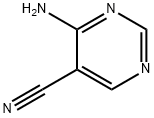
What is 4-AMINOPYRIMIDINE-5-CARBONITRILE?
Chemical properties
White to brown solid
The Uses of 4-AMINOPYRIMIDINE-5-CARBONITRILE
4-Amino-5-pyrimidinecarbonitrile may be used as a monodentate ligand to prepare metal complexes of Co(II), Ni(II), Cu(II) and Pd(II) ions. It may be used as a reactant to prepare 1H-pyrimido[4,5-d]pyrimidine-2,4-dione.
General Description
4-Amino-5-pyrimidinecarbonitrile (APC) is a pyrimidine derivative that has been synthesized via three-component reaction between benzaldehyde, benzamidine hydrochloride and malononitrile. The infrared, 1H NMR, 13C NMR and mass spectra of APC have been recorded.
Properties of 4-AMINOPYRIMIDINE-5-CARBONITRILE
| Melting point: | 251-255 °C(lit.) |
| Boiling point: | 355.8±27.0 °C(Predicted) |
| Density | 1.34±0.1 g/cm3(Predicted) |
| storage temp. | Keep in dark place,Inert atmosphere,Room temperature |
| solubility | DCM, DMSO, DMF, Methanol |
| form | Powder |
| pka | 2.60±0.10(Predicted) |
| color | Brown |
| Sensitive | Moisture Sensitive |
| CAS DataBase Reference | 16357-69-0(CAS DataBase Reference) |
Safety information for 4-AMINOPYRIMIDINE-5-CARBONITRILE
| Signal word | Danger |
| Pictogram(s) |
 Corrosion Corrosives GHS05  Skull and Crossbones Acute Toxicity GHS06  Exclamation Mark Irritant GHS07 |
| GHS Hazard Statements |
H302:Acute toxicity,oral H312:Acute toxicity,dermal H315:Skin corrosion/irritation H317:Sensitisation, Skin H318:Serious eye damage/eye irritation H331:Acute toxicity,inhalation H332:Acute toxicity,inhalation H335:Specific target organ toxicity, single exposure;Respiratory tract irritation |
| Precautionary Statement Codes |
P261:Avoid breathing dust/fume/gas/mist/vapours/spray. P280:Wear protective gloves/protective clothing/eye protection/face protection. P304+P340:IF INHALED: Remove victim to fresh air and Keep at rest in a position comfortable for breathing. P305+P351+P338:IF IN EYES: Rinse cautiously with water for several minutes. Remove contact lenses, if present and easy to do. Continuerinsing. P405:Store locked up. |
Computed Descriptors for 4-AMINOPYRIMIDINE-5-CARBONITRILE
New Products
Tert-butyl bis(2-chloroethyl)carbamate 4-Methylphenylacetic acid N-Boc-D-alaninol N-BOC-D/L-ALANINOL 3-Morpholino-1-(4-nitrophenyl)-5,6-dihydropyridin- 2(1H)-one Furan-2,5-Dicarboxylic Acid Tropic acid DIETHYL AMINOMALONATE HYDROCHLORIDE 1,1’-CARBONYLDIIMIDAZOLE R-2-BENZYLOXY PROPIONIC ACID 1,1’-CARBONYLDI (1,2-4 TRIAZOLE) N-METHYL INDAZOLE-3-CARBOXYLIC ACID (2-Hydroxyphenyl)acetonitrile 4-Bromopyrazole 5-BROMO-2CYANO PYRIDINE 5,6-Dimethoxyindanone 5-broMo-2-chloro-N-cyclopentylpyriMidin-4-aMine 2-(Cyanocyclohexyl)acetic acid 4-methoxy-3,5-dinitropyridine 2-aminopropyl benzoate hydrochloride 1-(4-(aminomethyl)benzyl)urea hydrochloride diethyl 2-(2-((tertbutoxycarbonyl)amino) ethyl)malonate tert-butyl 4- (ureidomethyl)benzylcarbamate Ethyl-2-chloro((4-methoxyphenyl)hydrazono)acetateRelated products of tetrahydrofuran
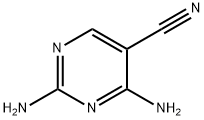
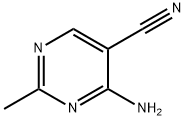



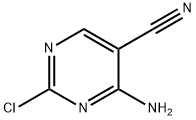
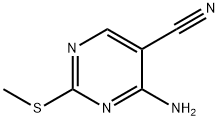
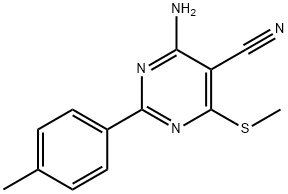
You may like
-
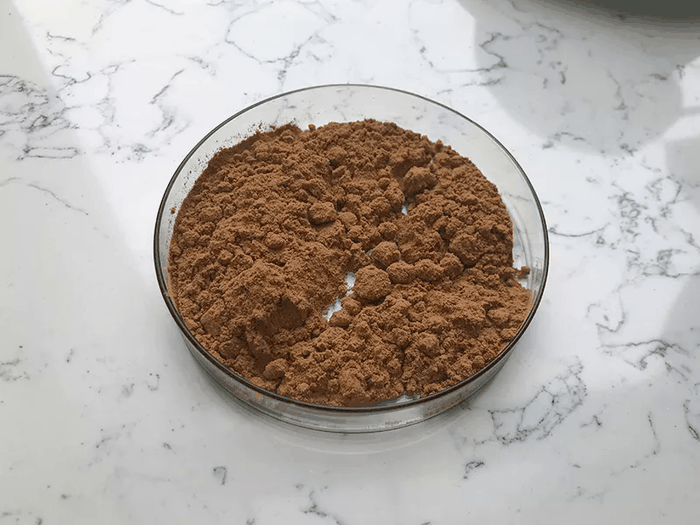 16357-69-0 4-Aminopyrimidine -5-carbonitrile 98%View Details
16357-69-0 4-Aminopyrimidine -5-carbonitrile 98%View Details
16357-69-0 -
 4-Aminopyrimidine-5-carbonitrile CAS 16357-69-0View Details
4-Aminopyrimidine-5-carbonitrile CAS 16357-69-0View Details
16357-69-0 -
 1975-50-4 98%View Details
1975-50-4 98%View Details
1975-50-4 -
 2-HYDROXY BENZYL ALCOHOL 98%View Details
2-HYDROXY BENZYL ALCOHOL 98%View Details
90-01-7 -
 2-Chloro-1,3-Bis(Dimethylamino)Trimethinium Hexafluorophosphate 221615-75-4 98%View Details
2-Chloro-1,3-Bis(Dimethylamino)Trimethinium Hexafluorophosphate 221615-75-4 98%View Details
221615-75-4 -
 14714-50-2 (2-Hydroxyphenyl)acetonitrile 98+View Details
14714-50-2 (2-Hydroxyphenyl)acetonitrile 98+View Details
14714-50-2 -
 118753-70-1 98+View Details
118753-70-1 98+View Details
118753-70-1 -
 733039-20-8 5-broMo-2-chloro-N-cyclopentylpyriMidin-4-aMine 98+View Details
733039-20-8 5-broMo-2-chloro-N-cyclopentylpyriMidin-4-aMine 98+View Details
733039-20-8
Statement: All products displayed on this website are only used for non medical purposes such as industrial applications or scientific research, and cannot be used for clinical diagnosis or treatment of humans or animals. They are not medicinal or edible.